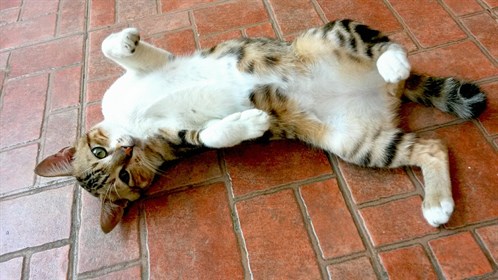
Relaxation for children
Relaxation Exercises for Children
Relaxation exercises help children to manage their reactions to stress, anxiety and worry. Relaxation exercises are a good distraction from worrying thoughts and reduce tension in the body. The exercises here include controlled breathing, muscle relaxation and guided imagery.
Controlled Breathing and Muscle Relaxation
Long, deep controlled breaths slow down the breathing rate and help children to relax. Muscle relaxation involves practicing tensing and relaxing different muscles in the body. This helps children to recognise the difference between tense and relaxed muscles.

Relax like a cat is a colourful leaflet for younger children to practice controlled breathing and muscle relaxation. It is best to sit down and read it with your child at a quiet time of day when there are no worries or stresses. Or, your child can listen to the audio version. There is a female voice and a male voice to suit your child's preference.
Relax Like a Cat Audio
Relax Like a Cat female voice
Relax Like a Cat male voice
Guided imagery
Children can close their eyes and listen to a voice guiding them through a soothing and calm imaginary scene. Children can also make up their own soothing image. For example, this could be a favourite place that makes them feel calm. Ask your child for details (e.g. what they can see, hear or smell) so you create the image together.
Practising
Practising relaxation exercises daily helps children learn how to relax and calm themselves. To begin with, it is best to practise when there is no distress. Encourage your child to practise at least once a day and when there is little chance of interruption or distraction. Once they have learned the exercises, they can be encouraged to use the techniques when they are feeling stressed or anxious.
Older children and teenagers will also benefit from doing regular relaxation.
Relax like a cat is a colourful leaflet for younger children to practice controlled breathing and muscle relaxation. It is best to sit down and read it with your child at a quiet time of day when there are no worries or stresses. Or, your child can listen to the audio version.
Share
Tweet
Plus1